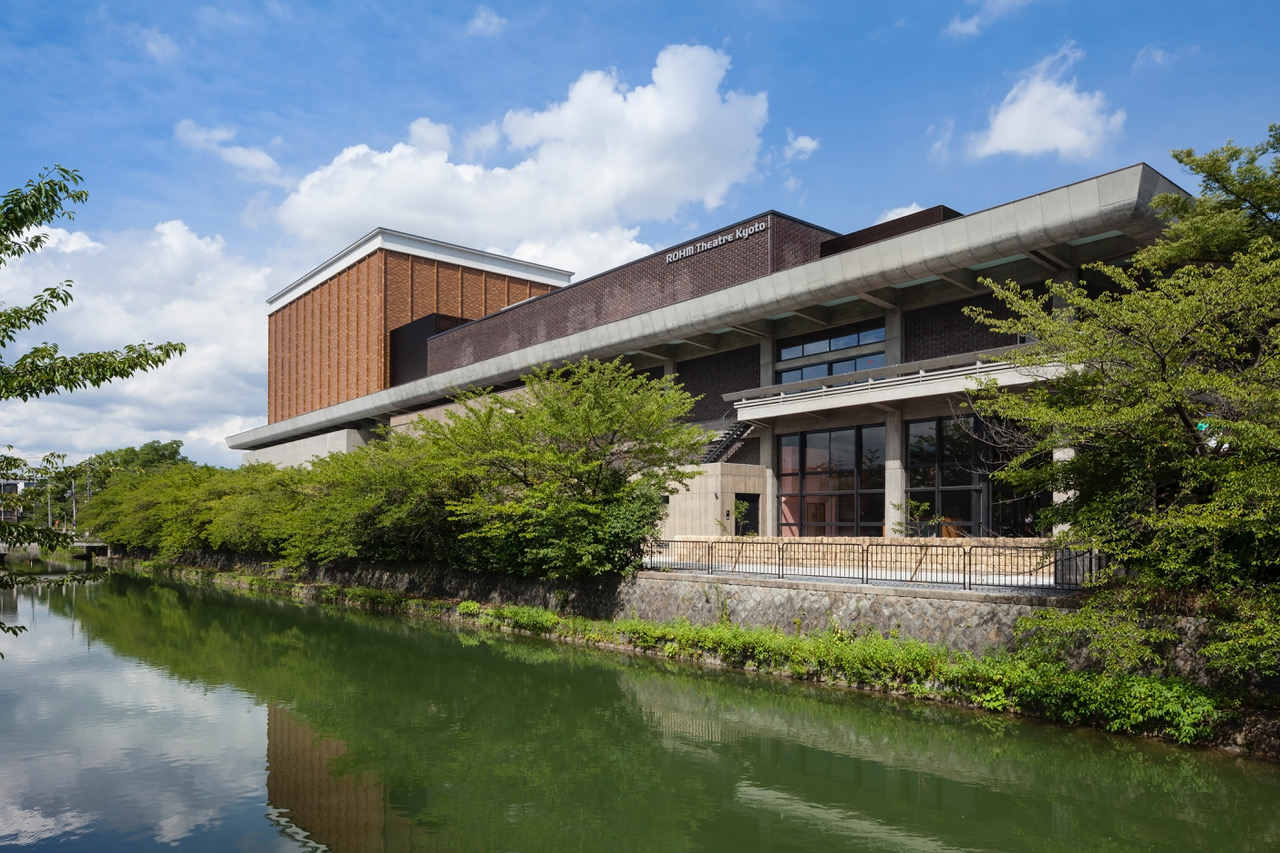ARCHI-CLE
京都会館は、戦後の日本に生まれた近代建築の傑作です。打放しの鉄筋コンクリートという素材を大胆に用いつつ、日本の伝統的建築につながる空間や形を、現代の私達の生活に生きるものとして、新しくとらえ直したのです。その親しみやすく、かつ力強いこの建築は、歴史ある美しい街、京都にふさわしい文化施設として、市民に愛され、親しまれてきました。
この度の改修は、そのような建物を更に長く後世に残し、より親しんで使われるように、古く傷んだものは補修し、支障のあった部分は改め、不足している働きを補ったものです。
旧建物の外観の、最も際立った特徴である、建物上部を一周している大庇は、丁寧に修復し保存されています。この大庇の下にある柱・梁も、バルコニーの欄干も、基本的な形は全て保存されています。その内部にあるふたつのホール、メインホールとサウスホールは、その位置と規模は以前と同じですが、その内装と機能は一新され、日本最高の施設として生まれ変わりました。サウスホールの改修は、建物の内部のみで行われていますが、メインホールは、舞台の広さ高さの不足を改善するために、この部分全体を取り壊し新しくする必要がありました。外部の大庇のかたちは、全て以前と同じに復元してありますが、舞台上部のフライタワーがその上に顔を出しています。客席も大庇の上に最上階が出てくることになりましたが、その結果、屋上から東山の山並みが楽しめる素晴らしい屋上テラスが生まれました。メインホールの地下には、これも新たなノースホールが付け加えられました。
全体に関わる新しい大きな特徴は、二条通から中庭に沿って伸び、冷泉通に抜けるガラスで囲まれた新たな空間ー現代の裳階(もこし)ーを付け加えたことです。これは、みっつのホールと会議室などを、ひとつに結びつけると共に、誰もがいつでも楽しむことが出来るみんなの縁側であり、あるいは建物の中の小路でもあります。建物の中に、このような通り抜けをつくることは、元設計者・前川國男が望んでいたことでもありますから、そのことからすると、この度の改修で初期の意図がはじめて完成したとも言えます。生まれ変わった建物が、更に多くの人に愛されることを願っています。
竣工日 / 2015年8月
構造・工法 / 増築棟RC造、SRC造 既存棟RC造、S造
規模 / 地上6階、地下2階
敷地面積 / 13,671.00㎡
建築面積 / 8,061.76㎡
延床面積 / 20,701.38㎡




写真 / 小川重雄
The Kyoto Kaikan is a masterpiece of postwar modern Japanese architecture. While making bold use of materials such as reinforced concrete with exposed finish, it offered a new perspective on the forms and spaces of traditional Japanese architecture, adapting them for modern life. This familiar but powerful architecture is eminently fitting in a cultural facility for the beautiful and historically rich city of Kyoto. It is well known and well loved by residents of the city.
The recent renovation repaired sections that had deteriorated with age, revamped problematic sections, and added functions that were lacking, so that this building could be passed down to later generations and used as an ever more familiar presence.
The most striking feature of the old building was the grand eaves that encircle it. These were carefully restored. The columns, beams, and balcony balustrades beneath the eaves were also preserved in their original form. The position and size of two of the theatres - the Main Hall and the South Hall - are unchanged, but their interior and functions were redone in an appropriate style for one of Japan's premier cultural facilities. Renovation of the South Hall was limited to the interior, but the stage of the Main Hall had to be demolished and reconstructed in order to remedy its insufficient height and width. The grand eaves of the exterior were all restored to match the originals, but the fly tower of the stage is visible above them. The highest floor for audience seating is also located above the grand eaves. One benefit of this is a marvelous rooftop terrace with an excellent view of the Higashiyama mountain range. The new North Hall was added in the basement of the Main Hall.
A major new feature of the whole complex is a contemporary version of the traditional mokoshi pent roof - a glazed space that stretches from Nijo-dori street along the inner courtyard to exit at Reisen-dori street. This unites the three theatres, conference rooms and other spaces into one, and serves as an engawa veranda that can be enjoyed by everyone. Kunio Maekawa, the original architect, wished to have a through passage of this type, so it could be said that the architect's original intention has finally been realized with this renovation. I hope that the reborn building will be cherished by many more people in the years to come.
Completion Date / 2015.08
Main Structure and Construction / Repaired portions: Reinforced concrete structure, Steel frame reinforced concrete structure Extensions: Reinforced concrete structure, Steel structure
Size / 6 levels above ground, 2 below
Building area / 13,671.00㎡
Building scale / 8,061.76㎡
Total floor area / 20,701.38㎡




PHOTO / Shigeo Ogawa



